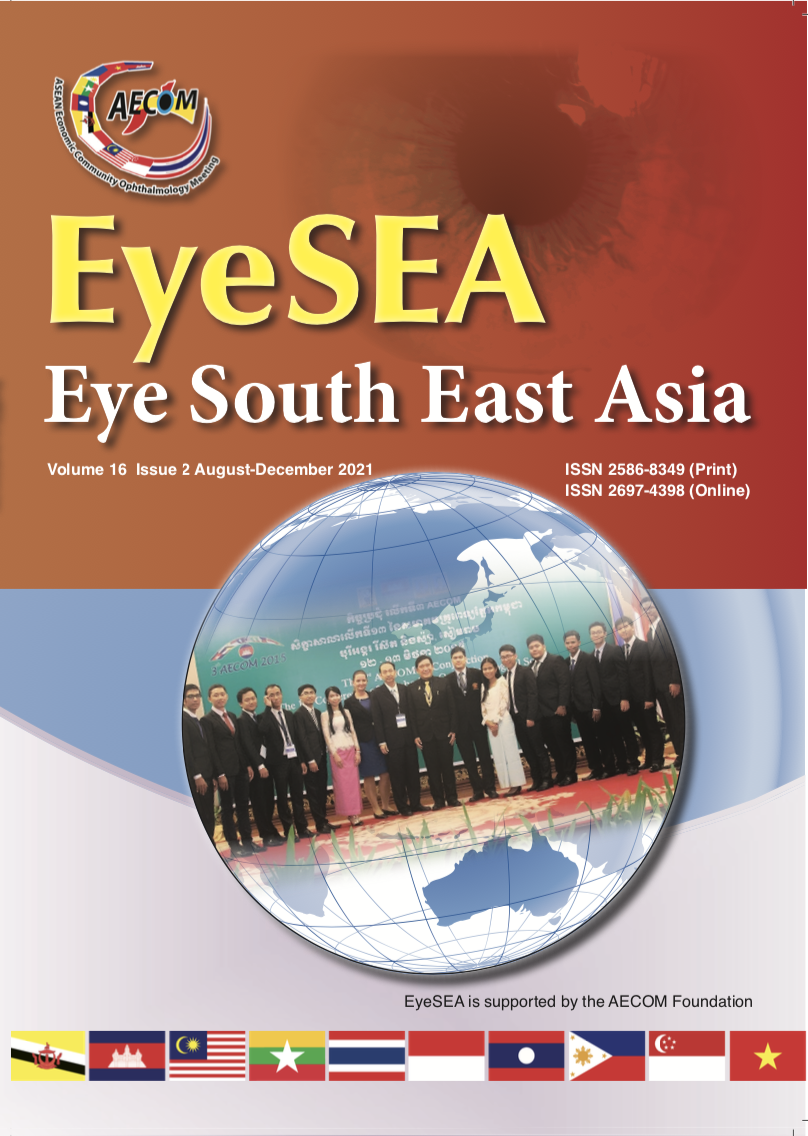Risk Factors of Postoperative Endophthalmitis in Intravitreal Anti-VEGF Injection
Main Article Content
Abstract
Objective: To find out how to reduce the incidence of intraocular infection from intravitreous injection by a retrospective study of the risk and environmental factors at Thammasat Hospital
Design: Retrospective study
Material and Methods: A total of 1,552 cases from 2017 to 2019 underwent the intravitreous injection, which contains diagnoses relating to retinal vein occlusion, diabetic macular edema, choroidal neovascularization, age-related macular degeneration. The data were collected, and the cases were divided into two groups (before and after 16 July 2018, adjusting the vitreous injection environmental conditions) for calculating endophthalmitis risks.
Main outcome measures: The primary outcome measure was the risk of endophthalmitis following intravitreous injection
Results: The results before and after adjusting the vitreous injection environment were statistically different with the confidence level of 0.05 (P<0.05), while intraocular pressure, complications, ocular surface disease, culture/organism, and surgical procedure were not statistically different (P>0.05).
Conclusion: In the investigation of endophthalmitis risk following intravitreous injection, the data characteristics of illness and treatment of the patients who received the intravitreous injection before and after adjusting the vitreous injection environment were compared. It was found that the diagnosed endophthalmitis disease and medicines the patients received before and after adjusting the vitreous injection environment were statistically different at the level of 0.05 (P <0.05). Environmental conditions can influence the development of infection.


